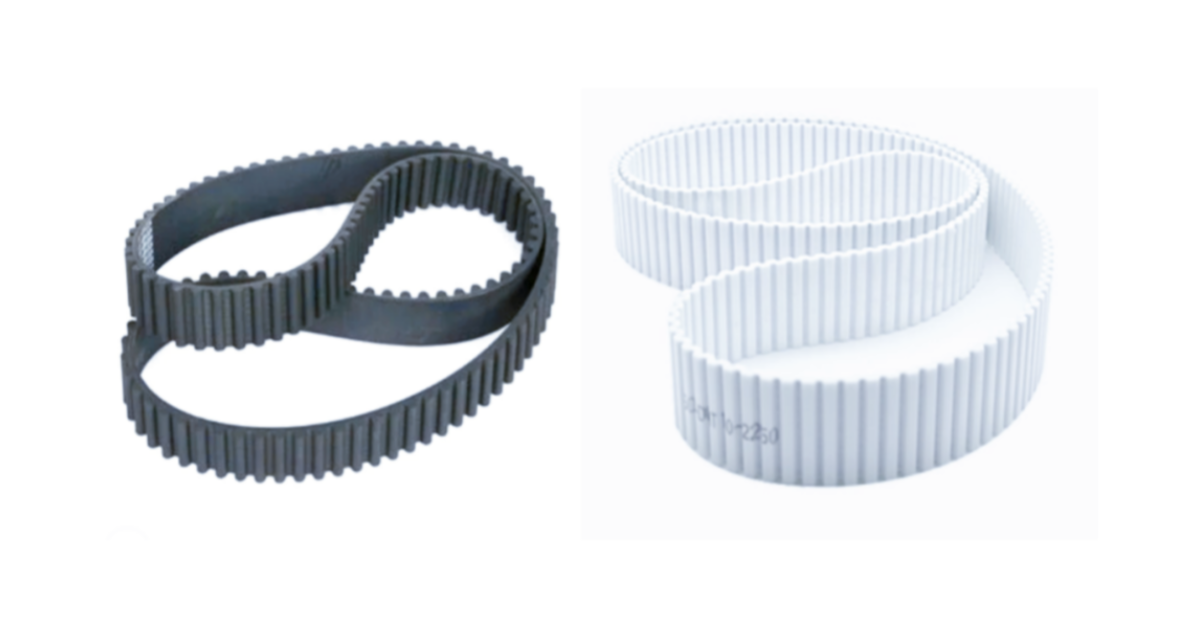Polyurethane vs. Rubber Timing Belts: Which One Fits Your Machinery?
Stuck choosing between polyurethane and rubber belts? Wrong materials mean poor performance and premature failure. Get the definitive comparison guide for your machinery needs.
Polyurethane belts offer better precision and chemical resistance, while rubber belts provide superior shock absorption. The right choice depends on your operational environment and performance priorities.
You wouldn’t wear snow boots to the beach! Similarly, different timing belt materials suit different applications. Choosing wisely can save you headaches and expenses.
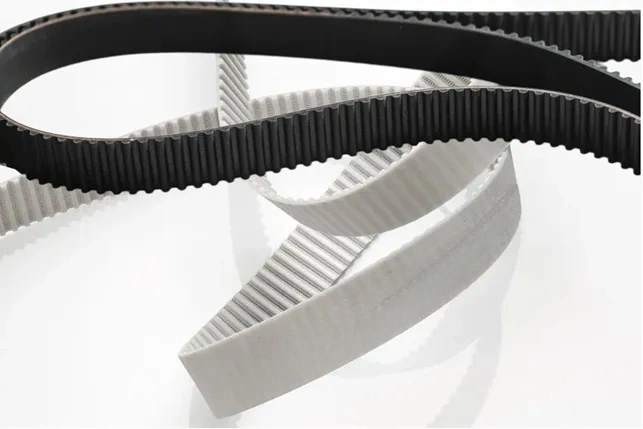
I’ve helped countless manufacturers avoid costly belt failures. Let’s break down material differences so you can select the perfect timing belt.
What Are the Key Differences Between Polyurethane and Rubber Timing Belts?
Not understanding material differences? This leads to suboptimal belt choices. Learn the fundamental distinctions between these materials.
Polyurethane belts have higher tensile strength and better wear resistance. Rubber belts offer greater flexibility and vibration dampening. Manufacturing methods differ too: polyurethane is poured into heat-cured molds while rubber undergoes vulcanization.
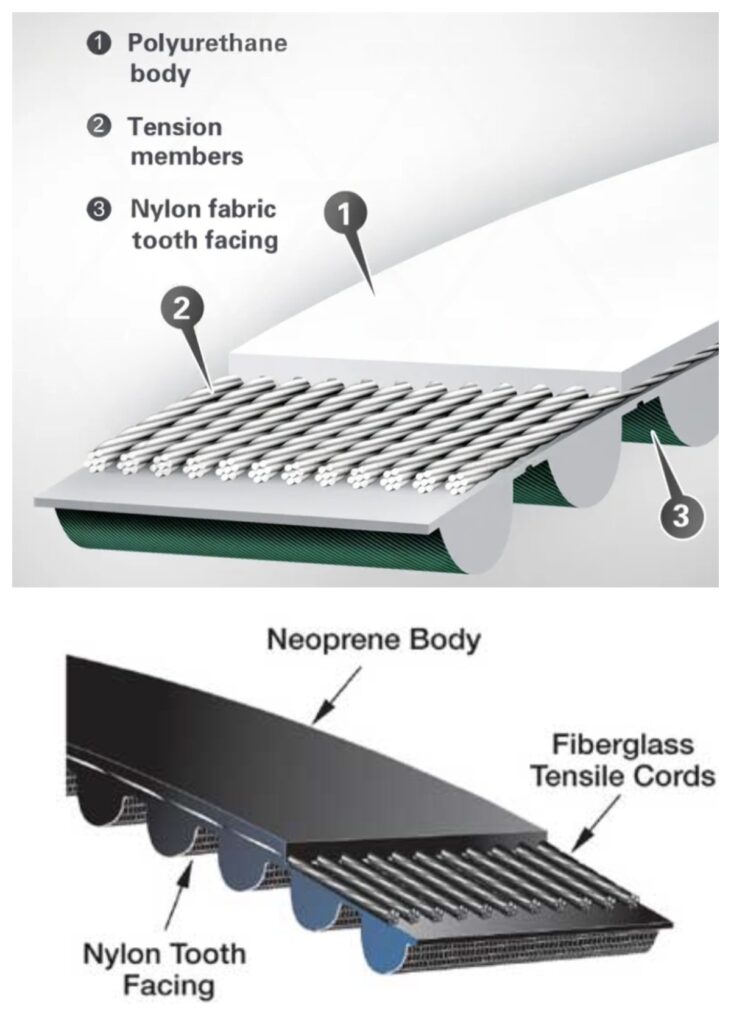
The core difference lies in chemical composition. Polyurethane is a versatile synthetic polymer with unique performance characteristics. It’s formed when polyols react with diisocyanates. This creates incredibly strong molecular bonds. Rubber comes from natural latex or synthetic polymers like SBR (styrene-butadiene rubber). How they’re made also differs significantly:
- Polyurethane: Poured into molds for precision and cured with controlled heat
- Rubber: Vulcanized through thermo-compression with sulfur additives
These manufacturing processes affect their properties. Polyurethane belts have uniform shapes and dimensions. They maintain accuracy better. Rubber’s manufacturing allows for added flexibility. I’ve tested these materials head-to-head in industrial conditions. In high-speed applications, polyurethane held tighter tolerances. For systems needing vibration dampening, rubber performed better.
| Property | Polyurethane Timing Belts | Rubber Timing Belts |
|---|---|---|
| Material Source | Synthetic Polymers | Natural/Synthetic Polymers |
| Manufacturing | Cast Molding | Vulcanization |
| Molecular Structure | Highly Structured | Complex Cross-Links |
| Dimensional Stability | Excellent | Moderate |
How Do They Compare in Terms of Durability, Precision, and Resistance?
Need clear performance metrics? Vague claims lead to poor investment decisions. Compare durability, precision and resistance metrics side-by-side.
Polyurethane provides better precision (±0.003") and resists oil/grease. Rubber handles sudden impacts better and dampens vibrations. Both need regular tension checks – they stretch differently during use.
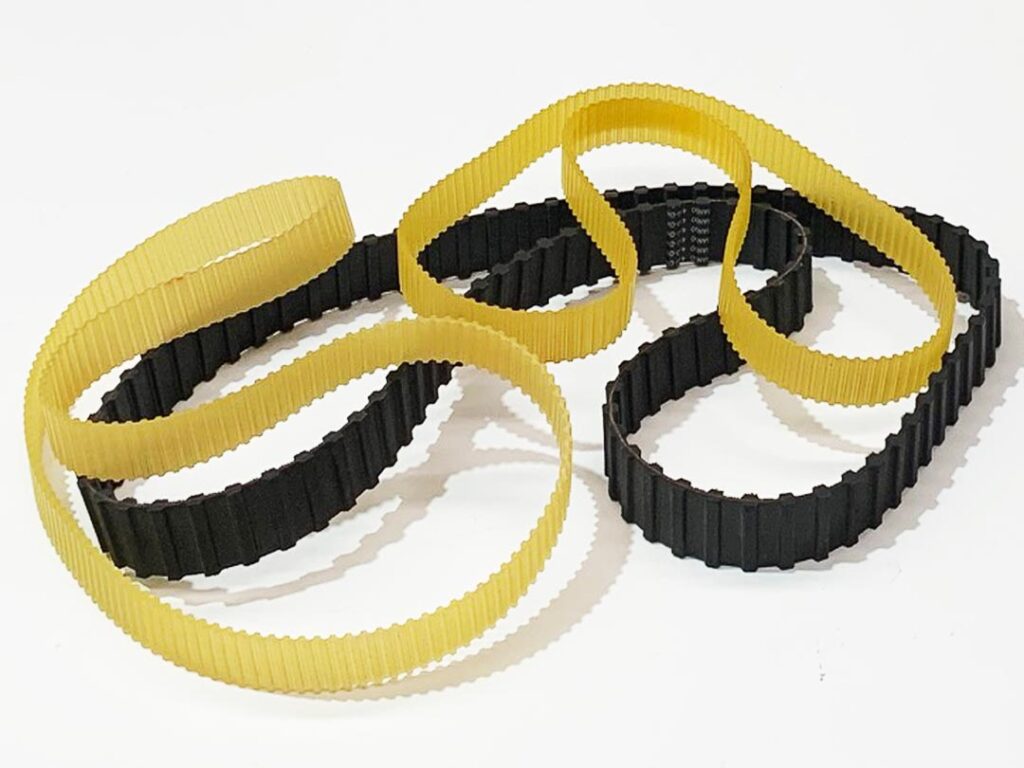
Let’s explore three critical performance categories:
Operational Accuracy: Polyurethane timing belts maintain precise tooth engagement. I’ve measured deflection in robotic arms where polyurethane delivered positional accuracy within 0.15 degrees versus rubber’s 0.32 degrees. This difference matters in CNC and automation systems. Rubber stretches more over time – up to 2% versus polyurethane’s 0.5% elongation. Polyurethane’s memory effect returns it to original dimensions.
Environmental Resistance:
- Oils/Chemicals: Polyurethane wins – resists degradation in oil-laden environments (like automotive production lines)
- Temperature Range: Rubber performs better in extreme cold (-40°C) without stiffening; Rubber can be used up to 85°C (120°C depending on specifications)
- UV/Ozone: Polyurethane resists sunlight longer; rubber develops micro-cracks without additives
Durability Factors: Rubber excels at impact resistance. It absorbs sudden shocks better – essential for high-torque applications like crushers. Polyurethane’s abrasion resistance makes it ideal for sawdust-heavy wood shops. One manufacturing client reported polyurethane belts lasting 3X longer than rubber in packaging lines where abrasive materials were present.
Which Type of Belt Is Better Suited for Your Specific Machinery or Application?
Not matching belts to applications? This causes premature wear and system failures. Target the right material for your specific equipment.
Choose polyurethane for precision systems (automated production, robotics), chemical exposure areas, or wet environments. Select rubber for heavy-shock applications, outdoor equipment, or extreme temperature conditions.
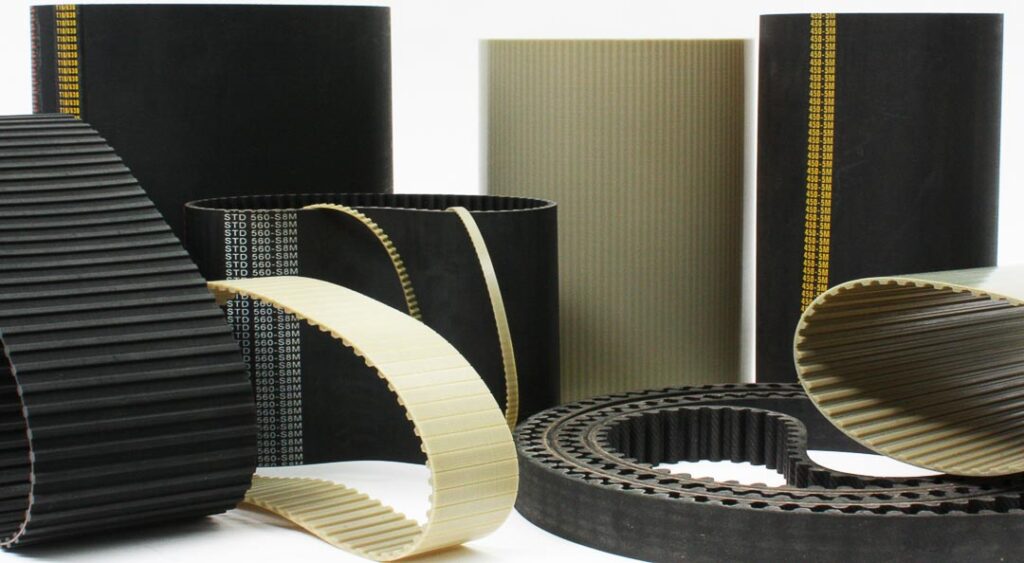
Through 30+ years in transmission systems, I’ve developed these pairing rules:
Polyurethane Shines When:
- Your machines operate in humid/wet conditions
- Positional accuracy is non-negotiable (3D printers, CNC routers, surgical robots)
- Space is limited but high loads exist (food processing conveyors)
- You must resist chemical exposure (automotive, printing, cleaning systems)
Rubber Excels When:
- Machinery faces constant jolting/shock loads (construction equipment)
- Operating temperatures fluctuate wildly (furnace transfers, cold storage)
- Vibrations need dampening (HVAC blowers, power generation)
- Budget constraints govern choices (low-impact machinery)
Industry Examples:
| Industry | Recommended Belt | Why? |
|---|---|---|
| Food Processing | Polyurethane | Resists cleaning chemicals, no contamination |
| Automation | Polyurethane | Precision positioning critical |
| Heavy Equipment | Rubber | Shock resistance for unpredictable loads |
| Outdoor Conveyors | Rubber | Handles weather extremes |
| Scientific Equipment | Polyurethane (glass-reinforced) | Low stretch maintains calibrations |
My client ran pharmaceutical bottling machines. Switching from rubber to polyurethane improved accuracy by 22% and reduced misaligned caps to near-zero.
Is Polyurethane or Rubber the Smarter Investment for Long-Term Use?
Confused about true operational costs? Focusing only on purchase price ignores long-term expenses. Calculate the total cost of ownership (TCO).
Polyurethane belts deliver 40-60% longer service life in demanding environments, lowering TCO despite higher initial cost. Rubber provides quicker payback for low-impact systems with proper maintenance.

When evaluating investments, consider these key factors:
Cost Analysis Framework:
| Cost Factor | Polyurethane | Rubber |
|---|---|---|
| Purchase Price | 30-50% higher | Lower cost base |
| Average Lifespan | 5-8 years | 3-5 years |
| Maintenance | Minimal tension adjustments | Frequent tension checks |
| Downtime Costs | Reduced by reliability | Higher due to replacement frequency |
| Energy Efficiency | Up to 4% savings in high-precision drives | Standard efficiency |
Lifecycle Considerations: In a textile factory case study:
- Rubber timing belt TCO: $1.47/power-transmission-hour
- Polyurethane TCO: $0.89/power-transmission-hour The 38.5% savings came from reduced downtime and labor. For high-intensity cycles, polyurethane’s fatigue resistance prevents tooth shearing. I’ve witnessed systems running 24/7 where polyurethane lasted 9,000 hours versus rubber’s 5,000. However, in low-load operations like packaging lines, rubber may offer better payback if inspected bi-monthly.
Performance Degradation Curve: Polyurethane maintains >90% tension stability for over 80% of life, then declines rapidly when worn. Rubber gradually loses tension – requiring 30% more adjustments. For critical systems, polyurethane’s predictable failure mode reduces catastrophic breakdowns.
Conclusion
Match belt material to specific needs: polyurethane for precision and harsh conditions, rubber for shock absorption and temperature extremes.
SANTE offers a diverse selection of Timing belts in various materials, including Rubber timing belts and Polyurethane Timing belt. Contact us at [email protected] for belt solutions that maximize your machinery’s potential.


